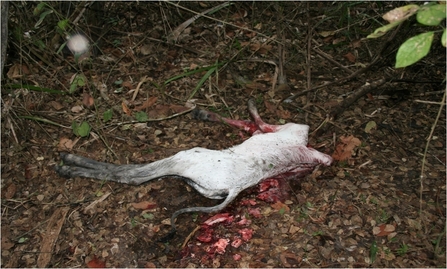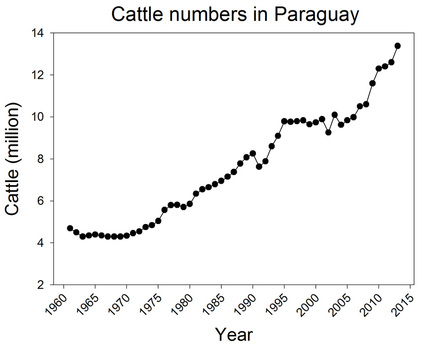Decision making: A decision-analytical approach

I place a strong emphasis on tailoring data collection and analysis in the context of decision making requirements; insuring that research, monitoring and decision making are thoroughly integrated so that each defines the actions of the others. Furthermore, as most decision making in natural resource management, including the topics I work on, have a strong human dimensions component, there is an inherent need to not only include all stakeholders into the decision making component process but to also adequately and transparently incorporate stakeholders values and beliefs.
Most of my decision making projects are related to human-wildife conflict which are typically characterized by a diversity of values and reality-based and perceived beliefs by stakeholders and consequently decision making towards reducing these conflicts need to formally take into account the biological, socio-economic, and political values and beliefs of all stakeholders while incorporating existing knowledge. Mitigating these conflicts, however, can be particularly difficult since stakeholders often have divergent views and values concerning the reasons for, extent, and solution to human-wildlife conflict. Furthermore, information concerning aspects of the conflict is often incomplete, inducing uncertainty in the decision making process.
For these aforementioned reasons I see a decision-analytical approach, incorporating principals of structured decision making and adaptive management, to identifying optimal decisions to reduce human-wildlife conflict as ideal due to its participatory nature, transparency, and ability to incorporate data and stakeholder values while formally accounting for uncertainties in the decision making process and incorporating learning to improve future decisions.
Most of my decision making projects are related to human-wildife conflict which are typically characterized by a diversity of values and reality-based and perceived beliefs by stakeholders and consequently decision making towards reducing these conflicts need to formally take into account the biological, socio-economic, and political values and beliefs of all stakeholders while incorporating existing knowledge. Mitigating these conflicts, however, can be particularly difficult since stakeholders often have divergent views and values concerning the reasons for, extent, and solution to human-wildlife conflict. Furthermore, information concerning aspects of the conflict is often incomplete, inducing uncertainty in the decision making process.
For these aforementioned reasons I see a decision-analytical approach, incorporating principals of structured decision making and adaptive management, to identifying optimal decisions to reduce human-wildlife conflict as ideal due to its participatory nature, transparency, and ability to incorporate data and stakeholder values while formally accounting for uncertainties in the decision making process and incorporating learning to improve future decisions.
Adaptive management for mitigating livestock-felid conflict in western Paraguay
|
Cattle ranching has been a traditional land use activity in Paraguay for centuries and for as long as there has been livestock in Paraguay there has been persecution of jaguar and puma in response to livestock depredation. The extent of this conflict has become increasingly more relevant for the conservation of jaguar and puma in Paraguay as the country has lost the majority of the forest cover in its eastern half with only a remnant population of jaguar and puma remaining there. While the Chaco and Pantanal of the western half of the country has been undergoing some of the highest rates of deforestation in the world, principally for the establishment of pastures for livestock production. The majority of this production is destined for international markets as Paraguay is the 6th largest beef exporter in the world.
This expansion of the livestock production sector in western Paraguay has not only led to habitat conversion and fragmentation for jaguar and puma, but also increasing conflict with those species due to livestock depredation. This project is an attempt to engage the ranching sector to actively participate in developing and making optimal decisions by incorporating their values and beliefs towards reducing the economic and conservation impacts that are generated by this conflict. |
Adaptive management for reducing loss of sunflower crops to Eared doves (Zenaida auriculata) in La Pampa, Argentina

The book chapter, Toma de decisiones estructuradas y manejo adaptativo para mitigar la pérdida en cultivos de girasol por la paloma torcaza en La Pampa, Argentina, with my collaborator Jaime N. Bernardos on using structured decision making to determine optimal decisions for mitigating conflict between Eared dove and sunflower farmers in La Pampa, Argentina.
|
The Eared dove (Zenaida auriculata) is a common species in many parts of South America that in many countries has exhibited a strong positive response to the intensification of row crop agriculture. These hyper-abundant populations can lead to high levels of field-level crop loss in some crop types and generates conflicting views of how to manage the conflict.
The province of La Pampa in central Argentina has witnessed an explosive increase in Eared dove populations during the last 10 years in relation to an expansion in the area sown in sunflower which has resulted in crop loss to doves. Consequently, there is a desire by the farming community and the provincial and federal governments to mitigate this conflict. At the same time there is uncertainty over the feasibility of various approaches with contrasting beliefs over the efficacy of decisions among stakeholders. Consequently, we developed a decision model employing a Bayesian Belief Network, using a structured decision making framework, towards communicating among stakeholders and identifying optimal decisions that are economically feasible and effective. |
Spanish language book on structured decision making and adaptive management
|
In my desire to promote effective conservation decisions in Latin America I co-edited a Spanish language book introducing structured decision making and adaptive management. This book, Toma de decisiones estructuradas para el manejo adaptativo de recursos naturales y problemas ambientales en ecosistemas productivos: Conceptos, metodologias y estudios de casos en Argentina, provides an introduction to the development and application of structured decision making, assigning values to objectives, and how monitoring is used to incorporate learning to update and improve the efficacy of future decisions. The book is comprised of 5 introductory chapters and has three case studies applying the methodologies covered in the book.
|








